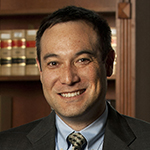
While political and judicial rhetoric around unions has softened in recent years, images of the past still haunt today’s labor movement, argue two Washington University in St. Louis researchers.
In “Re-Assembling Labor,” published online Nov. 5 in Social Science Research Network, the authors seek to draw the lessons of assembly into contemporary labor law — to re-assemble labor law around the theory and doctrine of assembly that formed its early core.
John Inazu, JD, PhD, associate professor in the School of Law and of political science in Arts & Sciences, is a leading authority on the First Amendment’s right of assembly. Marion Crain, JD, vice provost and the Wiley B. Rutledge Professor of Law, is author of two leading textbooks on labor law and work law. The writers contend that several recent examples highlight how organized labor’s public image remains linked to violence and anarchy, influencing its treatment at law.
Labor laws reinforce that image in several important ways, rendering illusory the law’s promise of protection for the right to organize and bargain collectively, they claim.Some of the most effective organizing drives are now occurring outside labor laws, as worker centers, new forms of worker organization and traditional labor unions alike seek to avoid the shackles of the National Labor Relations Act.

One example, the researchers write, is the recent protests organized by fast food workers around the country seeking higher wages in a movement called “Fast Food Forward.”
Opponents, including the U.S. Chamber of Commerce and some conservative politicians, have pressed the U.S. Department of Labor to classify the protest organizers as “labor organizations,” which would subject them to the financial reporting requirements and limits on expressive protests contained in the labor laws.
Another example comes from the protests by Wal-Mart workers in a movement called “OUR Wal-Mart” (Organization United for Respect at Wal-Mart). That movement seeks to pressure Wal-Mart to raise wages and improve benefits for low-waged workers, using pickets, rallies, demonstrations and one-day strikes.
Wal-Mart sought to characterize the group as a labor organization for the purpose of limiting pressure strategies under the labor laws, and responded by terminating and disciplining striking workers.
In both contexts, workers and the labor unions that have provided monetary support and training for community and workplace organizers have mounted a challenge against the economic structure of the retail industry, arguing that the low wages paid to front-line workers and the disproportionate share of profits funneled to management are emblematic of the income inequality that plagues our economy today, Inazu and Crain write.
Crain and Inazu argue that the First Amendment’s right of assembly holds the potential to offer greater protection than current labor law for these kinds of public protests, which simultaneously sweep beyond the single workplace that is the focus of labor legislation and also shape the ideology of the new workplace movements.
The authors argue that scholarly commentary to date has overlooked the important connection between the collective, group-based nature of labor activism and the First Amendment’s right of assembly, despite the common legal origins of both.
Inazu and Crain develop three theoretical insights reinforced by the connections between assembly and labor, and “obscured by contemporary focus on the rights of speech and association.”
First, they argue, collective activity represents more than simply an aggregation of individual voices. Second, groups are not one-dimensional, but have many functions, purposes and messages, which are developed and negotiated through collective expression and existence. Third, expression depends on the context in which it unfolds, and current doctrine too easily obscures that context, with significant ramifications for both public perception and group efficacy.
“Re-Assembling Labor” is forthcoming in the University of Illinois Law Review. The article suggests that the gains of assembly might facilitate a richer understanding of labor unionism and its connections to the rest of First Amendment jurisprudence.